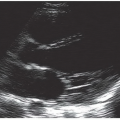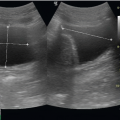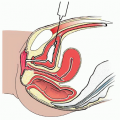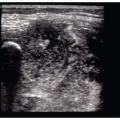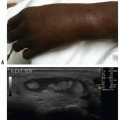Implementing Ultrasound into the Community Emergency Department
Bret P. Nelson
Stephen R. Hoffenberg
PROGRAM DEVELOPMENT
Starting an ultrasound program is both a clinical and an administrative challenge. It begins with the determination that ultrasound will improve the care of your patients, that you have physician support within your group for a single standard of care that incorporates emergency ultrasound, and that adding clinician-performed ultrasound is achievable in the political environment of your hospital. The decision has become easier as emergency ultrasound has evolved from an investigational technique to an evidence-based best practice, and as ultrasound education and competency assessment has become a required element of emergency medicine training (1).
There are a number of tasks that must be addressed when starting an ultrasound program, such as identifying a program leader and entering into discussions with other departments and hospital administration. The staff must be trained in the clinical techniques and decision-making processes specific to the use of ultrasound. The group must also develop credentialing criteria, establish a quality assurance program, select equipment, and devise a compliant approach to reimbursement (2, 3, 4).
LEADERSHIP
A consistent indicator for success in ultrasound implementation is a dedicated ultrasound program leader. The role of this leader is to explore the medical literature, to define the scope of the program, and to identify needed resources. In addition to developing documents and addressing program design and credentialing, the leader must also serve as a liaison with medical staff regarding emergency ultrasound. Probably the most important task of an ultrasound program leader is overseeing the quality of emergency ultrasounds. Successful programs have dedicated leadership that sustains the effort required to implement bedside ultrasound.
RELATIONS WITH OTHER SPECIALTIES AND DEPARTMENTS
Emergency ultrasound has been welcomed by many members of the medical staff as the addition of a clinically useful technology. The effort to create an emergency ultrasound program has been understood by those specialties that have similarly added clinician-performed ultrasound. Obstetricians routinely utilize ultrasound on the labor and delivery unit, as do many family practitioners. Critical care physicians and trauma surgeons have progressively adopted diagnostic ultrasound as well as procedure guidance with ultrasound (5, 6, 7, 8, 9). Vascular surgeons, urologists, anesthesiologists, perinatologists, rheumatologists, physiatrists, and retina surgeons, among others, have found advantage in adding ultrasound to their practices. These specialists are often supportive of the use of ultrasound
by emergency physicians. This is particularly true when the emergency department (ED) has communicated the current status of emergency ultrasound education and research, and has explained how ultrasound will be introduced, used, and monitored. So the landscape has shifted to the point where it may become the exception rather than the rule that radiology controls ultrasound imaging at a given institution. It is certainly becoming rare that emergency medicine is the only specialty interested in using the technology for patient care. Therefore when medical staff politics are an issue, it is advisable to seek input and to develop support from those members of the medical staff and departments that are most likely to understand and endorse the addition of clinician-performed ultrasound.
by emergency physicians. This is particularly true when the emergency department (ED) has communicated the current status of emergency ultrasound education and research, and has explained how ultrasound will be introduced, used, and monitored. So the landscape has shifted to the point where it may become the exception rather than the rule that radiology controls ultrasound imaging at a given institution. It is certainly becoming rare that emergency medicine is the only specialty interested in using the technology for patient care. Therefore when medical staff politics are an issue, it is advisable to seek input and to develop support from those members of the medical staff and departments that are most likely to understand and endorse the addition of clinician-performed ultrasound.
Radiology and cardiology represent traditional providers of consultative ultrasound services. While individual radiologists or cardiologists may be supportive of emergency ultrasound, in the past both specialties have organized themselves to resist the credentialing of emergency practitioner ultrasound. Traditionally, these specialties had adopted the position that standards developed by their own specialty organizations should apply to all practitioners of ultrasound. These standards were applied to comprehensive examinations, rather than for focused studies, and were designed for practitioners primarily engaged in referral imaging rather than for those who would use ultrasound in the direct care of their patients (10, 11, 12).
Cardiology adopted the use of ultrasound technology early and established the value of echocardiography, whereas radiologists have not traditionally performed this service. Cardiologists have pursued a consultative laboratory model for cardiac ultrasound, but, interestingly, the development of compact and highly portable ultrasound devices has changed the perspective of many cardiologists. It has become clear that portable echocardiography devices are more accurate than physical examination in the detection of pericardial effusion, valvular lesions, and depressed myocardial contractility (13, 14, 15, 16). An increasing number of cardiologists are utilizing compact ultrasound devices, and some are adopting a new attitude toward the utility of bedside ultrasound. The training standards and policies originally published by the American College of Cardiology (ACC) and the American Society of Echocardiography (ASE) excluded emergency physicians from being eligible to independently perform or interpret emergency echocardiography (11,12).
Recently, the tide has turned in response to changes in portable technology and practice patterns, and a growing body of literature supporting the efficacy of focused cardiac ultrasound (FOCUS) in the hands of emergency physicians (17, 18, 19, 20, 21, 22, 23). In 2010, the ASE and the American College of Emergency Physicians (ACEP) cosponsored a consensus statement on the role of focused cardiac ultrasound, recognizing that “the training requirements for comprehensive echocardiography are not the same as those for FOCUS, and therefore each society is responsible for maintaining the integrity of their training protocols and for ensuring the responsible practice and use of these imaging techniques” (24).
In practice, few emergency physicians have experienced resistance from staff cardiologists regarding the evaluation of patients by echocardiography for pericardial fluid, cardiac activity, or unexplained hypotension. When medical staff cardiologists are presented with the focused objectives of emergency echocardiography, the positive impact on patient care is often appreciated and supported.
Relationships with the specialty of radiology have remained the most difficult for developing emergency ultrasound programs. While at some institutions emergency ultrasound has been supported by radiologists interested in patient access to care or who recognize the role of focused applications, such situations remain the exception rather than the rule. Radiologists are the largest providers of consultative ultrasound services. They have developed the paradigm for consultative services and have a vested interest in the control of ultrasound imaging. They have argued that the quality of studies, qualifications of providers, and the paradigm of emergency ultrasound do not meet standards established by their specialty. Often there is a lack of understanding as to what emergency ultrasound is and what is needed for the management of an emergency patient or an ED. Furthermore, radiologists routinely promote their right to provide services on an exclusive basis, but often restrict services to certain times of day, days of the week, or type of examination (25). Unlike cardiology, the value of focused studies has not been recognized by radiology leadership, and published standards address physician qualifications to interpret comprehensive consultative studies (10).
When implementing an emergency ultrasound program, the emergency physician should be direct and open with the department of radiology. Keep in mind that a consensus may never be reached with radiology and while open discussion is positive, endless discussion will not improve patient care. Your goal should be to educate the medical staff and hospital administration as to the proven value of immediate ultrasound that includes enhanced patient throughput, decreased medical risk, and improved outcomes. In an era of ED overcrowding, limited radiology resources, an adverse medical-legal environment, and concerns regarding patient safety, ultrasound is a technology offering advantages that cannot be ignored in deference to the interests of other specialties.
RELATIONS WITH HOSPITAL ADMINISTRATION
Hospital administration has several goals surrounding emergency ultrasound. Its central goal is to offer the highest quality of care to emergency patients. Additional goals include improving patient satisfaction, enhancing patient safety, and decreasing the costs of providing medical care. At the same time, administration wants to preserve needed revenues and maintain collegial relationships between departments. When proposing an emergency medicine ultrasound program, all of these issues should be discussed with hospital administration.
There are sound arguments for adding clinician-performed ultrasound to emergency medicine practice. Patient satisfaction has been correlated with ED throughput times, and increased throughput has been demonstrated to improve with the addition of emergency ultrasound (26,27). Patient safety has been enhanced (28,29), and the cost of providing emergency ultrasound is less than the cost of a consulting imaging service (30, 31, 32, 33). Most savings are realized in decreased personnel costs, particularly for sonographer “on-call” expenses during nights and weekends (31, 32, 33). Additional benefits may accrue in instances when sonographers are unavailable or object to providing 24-hour coverage 7 days a week. The impact of emergency ultrasound on hospital revenues is complex and will vary based on the total number of studies
performed, the mix of complete versus limited studies billed by the hospital, and the ED patient financial mix. Another important factor in working with hospital administration is to find out when capital budget item requests should be submitted, as securing funding for equipment in the middle of a budget year is often difficult for hospital administration. A well-prepared “white paper” outlining supporting documents and including credentialing standards, quality improvement plans, equipment requirements, and a full explanation of the advantages of immediate ultrasound will be of great help to administration. To this end, the ACEP Emergency Ultrasound section has collected a number of useful documents, presentation templates, and other integral resources for developing an emergency ultrasound program (34).
performed, the mix of complete versus limited studies billed by the hospital, and the ED patient financial mix. Another important factor in working with hospital administration is to find out when capital budget item requests should be submitted, as securing funding for equipment in the middle of a budget year is often difficult for hospital administration. A well-prepared “white paper” outlining supporting documents and including credentialing standards, quality improvement plans, equipment requirements, and a full explanation of the advantages of immediate ultrasound will be of great help to administration. To this end, the ACEP Emergency Ultrasound section has collected a number of useful documents, presentation templates, and other integral resources for developing an emergency ultrasound program (34).
PHYSICIAN TRAINING
The majority of emergency medicine residents are taught ultrasound and will meet emergency medicine training standards by the completion of their training. Residency-trained physicians should be granted emergency ultrasound privileges when joining a medical staff that recognizes emergency ultrasound privileges (2). In many instances, these privileges will simply be a part of emergency medicine core privileges. In other instances, additional evidence of competency may be required, such as confirmation by the physician’s residency director of a sufficient number of cases with demonstrated quality. Candidates for recruitment who have been trained in ultrasound often view the use of ultrasound by a practice as an indicator of quality.
Stay updated, free articles. Join our Telegram channel

Full access? Get Clinical Tree


